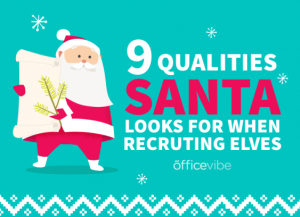Have you been keeping your website content up to date? Let me help you out. The answer is no. Oh, sure, you’ve stuck a dreadful holiday stock image on your home page and updated your carousel with the latest campaign-o-rama effort, but really, you haven’t been keeping up, have you?
In 2007, the average website had 273 pages. I’m willing to bet that 2007 was about the last time most B2B sites had a good clean out. I can’t find any more current stats than that on page count, but I just can’t imagine it’s lower. The average page size is now over 2MB so this tells me we’re just not paying a ton of attention. Why should we? Storage is cheap, memory is cheap, networks are fast, so there really isn’t a lot of reason to do the big clean. It’s like a giant garage that keeps expanding as you add more junk.
Even Google’s grumpy Panda doesn’t penalize page count (though it does get a bit prickly if you’re adding pages too rapidly), so there’s really not a lot of downside to your disgraceful housekeeping. Except this one, horrible fact: every page is a landing page. In the Googleicious, SEO miasma, absolutely every page ever created, no matter how regrettable, is findable unless someone went to the trouble to get rid of it. Good grief.
People can find your terrible video. They can see that time you called your layoffs a “repositioning” . They can find your horrible mission statement from 2009, the dumb photo of your receiving department’s holiday party and, who can forget the product brochure from 2004?
Does your event page feature invitations to shows that are almost a year old, like this company? How about job postings for roles you filled months ago?
These are more embarrassing than anything, but what about old pricing pages? This company either hasn’t raised prices in five years or is in some danger of having someone show up with this in-hand for their next order. In some places you might actually be held to old prices if they are considered “published”.
How about the three-year-old copyright notice in the footer? Not good news if you’re trying to protect trademarks. And let’s not forget the 404 errors kicked out by all those pages you remembered to kill off, but whose links live on forever.
For some of us, there’s the added horror of abandoned websites. Many marketers may not even know these old pages exist or may have forgotten them as quickly as the unsuccessful campaign they supported. Yet there they are, the Marie Celestes of the digital age, forever adrift with a disconnected toll-free number and unmonitored email address. many of which we may not even know exist. Pizza Hut, for example, might want to take a look at this page.
Here’s the real issue for B2B, though: a small percentage of your customers or prospects will connect to you on Twitter or LinkedIn or Facebook but 100 percent of them will, at some point, visit your website. Until the day websites themselves become as obsolete as the content they serve, we need to be particularly diligent about keeping them fresh and tidy.
Fun fact: I wrote this post about two weeks ago and put it in the queue to publish. About a week later, I got caught with a massively outdated Corporate Overview page. Which I am not proud to report is still massively outdated.
Next week, we’ll look at where to start and who you can get to tackle this thankless job.
Digital & Social Articles on Business 2 Community(56)
Report Post







